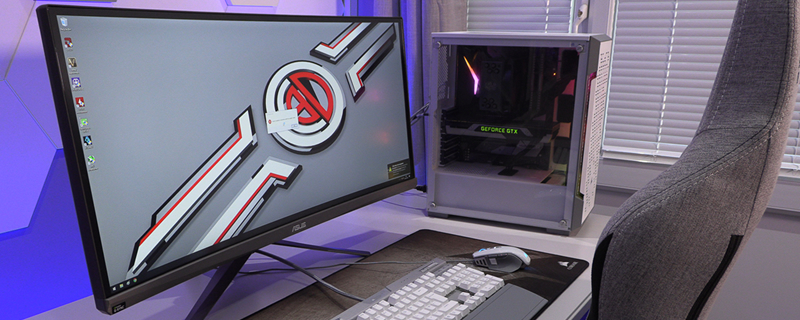Corsair iCUE 220T RGB Airflow Review
Conclusion
When looking at the iCUE 220T RGB Airflow, we first need to look at where the “value” of this enclosure lies. For £100, some buyers will argue that the 220T costs too much, but it is worth remembering the value of this case’s three included RGB fans. These fans cost £50 on their own, and that pricing needs to be considered when looking at the iCUE 220T.Â
With this in mind, RGB fanatics should consider the iCUE 220T as good value, as nowhere else provided the level of RGB control that this case offers for £100. Each of the systems’ included SP120 Pro RGB fans offer with it eight addressable RGB LEDs, which is a lot better than most affordable RGB offerings. Â
We can see that Corsair has clearly put a lot of effort into this enclosure, especially with the 220T’s white iteration. Here we see grey dampers for the tempered glass side panel, a clear acrylic window instead of the standard, over darkened, smoked glass that adorns competing cases. Even the uncoloured rivets provide some contrast with the case’s white components. Aesthetically, there is a lot to like about the iCUE 220T.Â
Now, we can’t talk about this case without mentioning Corsair’s iCUE software, the hub of Corsair’s entire RGB operation. With this case comes three SP120 Pro RGB fans and a 6-way Lighting Node CORE RGB controller, the 220T RGB offers plenty of lighting options out of the box. Beyond the case’s stock configuration, the enclosure is also ready to support three additional RGB fans, which is enough to fill the case’s remaining fan slots.Â
When it comes to building a PC within the iCUE 220T, it must be stated that the 220T is a compact case. To fit our Corsair 550X power supply, and manage our cables, we needed to remove the case’s 3.5-inch drive bays. We could refit this cage afterwards, but this example does showcase that the case’s compact nature can add to your system’s build time.Â
Thankfully, the build process for the iCUE 220T is relatively straightforward. The case offers ample space for cable management and enough cable routing options to please even the pickiest of PC builders. On top of this, the 220T can be made to look tidy with minimal cable management effort. Just look at our images on page 2 as an example.Â
 Â
There are some areas where the iCUE 220T RGB falls over, especially when compared to competitors like the Fractal Meshify C. For starters, Corsair’s SP120 Pro RGB fans don’t perform well at low RPMs (see our thermal testing on page 3). Their static-pressure oriented design s not ideal for creating airflow. While this becomes less of an issue at higher RPMs, it is also worth noting that this is the iCUE 220T RGB Airflow, not the iCUE 220T RGB Static Pressure. Another small gripe is the case’s lack of a cover for the 220T’s PSU shroud. While we know why this feature is missing (as there is a 120mm fan in front of it), it is nevertheless something that sends our case OCD into a frenzy. This is another point in favour of Fractal’s Meshify C.Â
Ultimately, the hill that the Corsair iCUE 220T lives and dies on is the hill of RGB. Yes, £100 is a lot of money, and yes, you can get some more case for your money, but none of those options matches what Corsair offers with iCUE and three SP120 Pro RGB fans. If you don’t care about RGB you can save £10 or £20 and go for Fractal’s Define C or Meshify C respectively. However, we will note that both of those cases ship with fewer fans and no RGB functionality.Â
If you don’t care about RGB, you probably shouldn’t be looking at this case. If you want RGB lighting out of the box the Corsair iCUE 220T RGB airflow is a solid offering. Nowhere else offers this level of RGB for £100. It’s really as simple as that. With this in mind, we give the Corsair iCUE 220T RGB Airflow the OC3D Approved Award.Â
Â
You can join the discussion on Corsair’s iCUE 220T RGB Airflow on the OC3D Forums.Â



